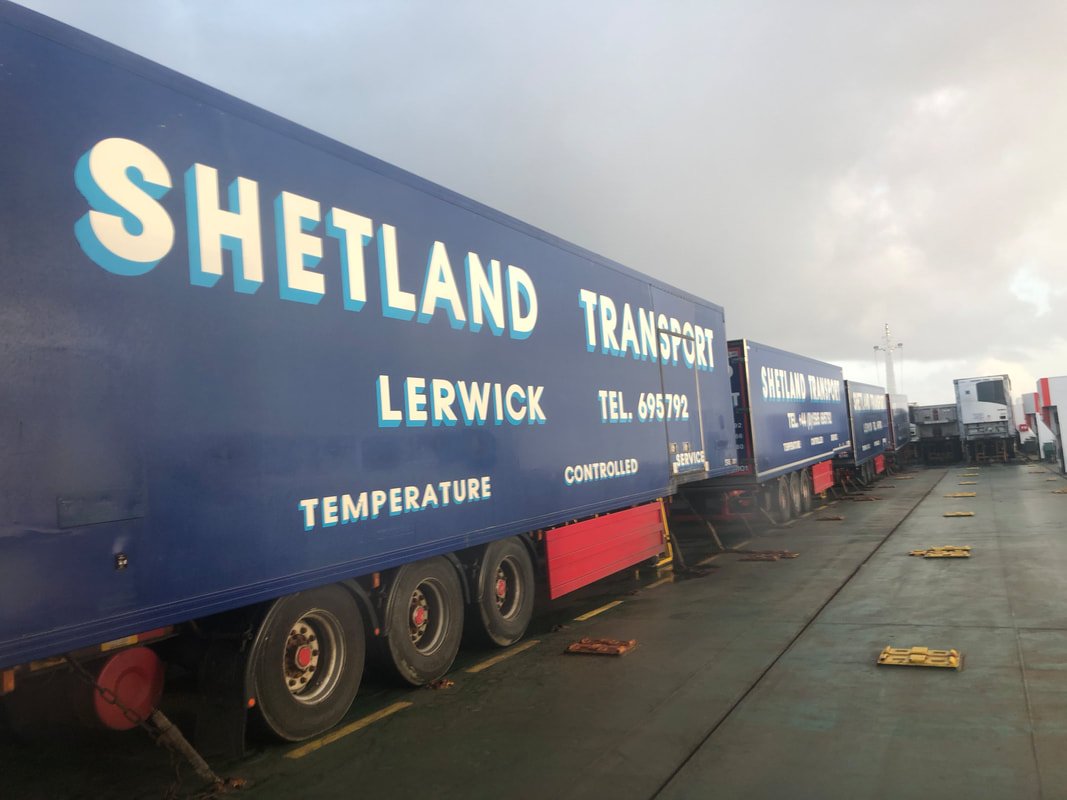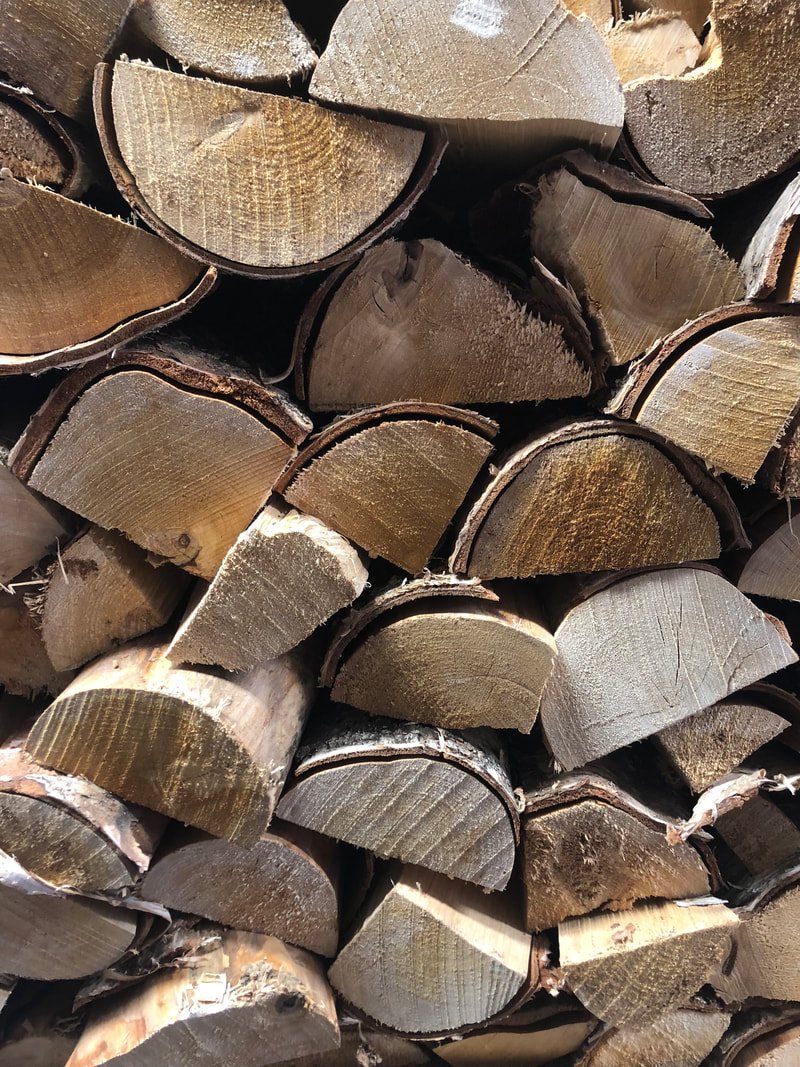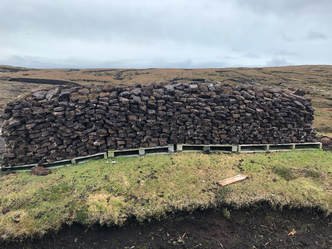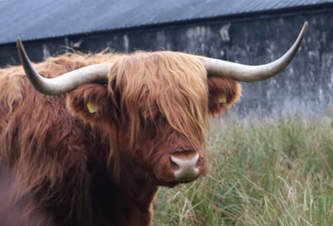Shetland & Scotland: the same, but different
Having recently spent a few days on the Scottish mainland, I decided to investigate the differences, from a visitors point of view, between Shetland and Scotland. Of course to a visitor, this sentence alone will seem counter-intuitive because obviously, Shetland is part of Scotland so why do we speak about it as though it's a different country altogether?
Anyone who follows my Instagram stories will know that we got stuck on the freight boat.
The differences between Shetland and the rest of Scotland can be quite striking. Many visitors arrive here expecting the full Scottish treatment – the haggis, the kilts and the bagpipes – and I find myself, as a tour guide, quickly explaining to them that much of the culture and tradition in Shetland stems from the close ties that we had with Scandinavia in the past and that actually, we have only been part of Scotland for some 550 years.
For guests, particularly those from overseas, our inability to embrace Scottish culture and tradition after only 550 years usually gets a laugh in itself...
The marriage window in Lerwick Town Hall. This window depicts the marriage between Princess Margaret of Denmark and King James III of Scotland.
To understand this unusual relationship, we must travel back in time to about 850 AD and the arrival of the Vikings in Shetland. Their arrival and subsequent settlement have become known as the Norse period. This era of Scandinavian rule brought significant changes, much of which is still evident, and celebrated, here today. Today marks the first of the season’s Fire Festivals which kicks off in Scalloway and includes a Viking parade and burning of a replica Viking longship in the picturesque harbour. Throughout Shetland, there are ten Up Helly Aa/Fire Festival celebrations between January and March.
This period of administration came to an end in 1469 when King Christian I of Denmark sanctioned the marriage of his daughter, Princess Margaret, to King James III of Scotland. What was to happen next would prove to be one of the most important turning points in our islands’ history. In those days it was not uncommon for royal families to intermarry, and these marriages were usually politically driven. In the case of Princess Margaret and King James, it was hoped that a union would reconcile differences that had almost set the two countries at war. Scotland was in arrears to the Norwegian Crown (presided over by the Danish King Christian) and had been paying back the ‘Annual of Norway’ for several years. A condition of the marriage was a debt write-off, 100,000 crowns for the wedding and the islands of Orkney and Shetland.
King Christian was keen to retain Orkney and Shetland and abolished the arrears, pledging 60,000 Rheingulden (gold florins from the Rhineland and a popular currency in Northern Europe at this time) as a wedding dowry instead.
Unfortunately, King Christian couldn’t afford to pay this dowry as promised, and with the wedding set for 1469, he instead pawned Orkney and Shetland. Slightly insultingly, although understandable given Orkney’s farming credentials, the price set against each island was: Orkney 50,000 florins and Shetland, a mere 8,000 florins. Shetland was very much bolted on to the end of the deal when he failed to raise the cash any other way. Christian planned on redeeming the islands at a later date, even imposing a tax on Denmark to try and raise the money, but this never happened and Shetland and Orkney have remained part of Scotland since.
Despite this annexation to Scotland, a strong sense of Scandinavian heritage remains, and a feeling that Shetland is the same, but different. Lerwick's new eatery, The Dowry (right), takes its name from this transfer of Shetland to Scotland in 1469, a nod to that marriage between Princess Margaret and King James III which changed the course of history.
Landscape
Perhaps the most obvious difference is the landscape, Shetland is characterised by a distinct lack of trees (this also marks it out as different to many parts of Scandinavia too, but let's not go there). This is one of the first things the discerning visitor will spot. Thin soils, a salt-laden environment, grazing animals and strong-winds all contribute to this tree-less landscape but what we lack in trees, we make up for in blanket peat bog.
In Scotland, there are plenty of trees and log stacks are not an uncommon sight (left). In Shetland peat stacks (above) and peat working are a common sight in an almost treeless landscape.
This leads onto the second difference, Scotland enjoys far more growing days than Shetland, resulting in far more large-scale farming throughout Scotland, rather than crofting, which still dominates much of the Shetland landscape. A crofter in Shetland can expect about 100 good growing days, compared to about 250 in Aberdeenshire - it's no wonder my tomatoes failed to ripen this year!
Furthermore, the thin soils and harsh climate mean that it's harder to grow and establish crops. Limestone valleys such as Weisdale and Tingwall provide fertile soils, as does the South Mainland, sitting on its bed of old red sandstone, however 50 per cent of the islands remain covered in acidic, blanket peat moor which proves challenging for growers.
My third observation relating to the landscape lies in the topography. In Scotland, visitors find great pleasure, and challenge, in Munro bagging (conquering one of the 282 hills that exceed 3,000 ft (915m). In Shetland, there are none of these, but what is lacking in height is made up for in style. Shetland boasts no less than 19 Marilyns, shorter than Munros, these are hills in excess of 500ft (150m) which can be readily bagged by the enthusiastic hiker. More information about walking in Shetland can be accessed here.
I wrote about walking Shetland’s highest hill, Ronas Hill, here.
Ben Nevis, the highest mountain in Scotland (and the UK) it stands at 1, 345m (4, 411ft).
Ronas Hill, the highest hill in Shetland, reaching 450m (1, 480ft) at its summit.
Culture
Perhaps the greatest differences can be found in the cultures of Shetland and Scotland, although sharing many similarities in folklore, tradition and belief, there are also some striking differences. To save being too wordy, I've outlined a few of these in the table below. This is by no means an exhaustive list, it's simply a few that quickly came to mind and may be most obvious to a visitor.
The Highland coo, a symbol of Scotland.
The Shetland pony, a symbol of Shetland.
The Flag
Shetland and Scotland also boast different flags. In 1969, to celebrate the 500th anniversary of Shetland becoming part of Scotland, a new flag was created. This flag carries the Scandinavian, or Nordic, cross and bears the same colours as the Scottish saltire. The flag is a real celebration of Shetland’s rich past; commemorating 500 years of Scandinavian rule and 500 years of Scottish rule.
The Shetland flag, with a proud Shetlander (left) and the Scottish flag flying in the Highlands (above), set against an impressive Munro. These flags, like the cultures, are similar, but different.
It's a curious thing, and something that I was always aware of growing up in Shetland. Certainly taking the boat south, to the mainland (Scotland) was a real novelty, and arriving in Aberdeen as a bairn certainly felt like you were landing in a foreign and unfamiliar land. None of these points offer anything groundbreaking, they are simply a collection of observances which I make to people who visit, in an attempt to demonstrate, and explain why
Shetland and Scotland are, the same, but different.
Shetland is also marked by a unique and varied dialect which I spoke about at length in this podcast.
See you all next time, thanks for reading.













